Evidence-Based Management of Stroke

Price: 315,00 lei
Availability: in supplier's stock
Author: Biller, Jose; Ferro, Jose M., MD, Ph.D.
ISBN: 9781903378762
Publisher: TFM Publishing
Publishing Year: 2011
Pages: 334
Category: NEUROLOGY
DESCRIPTION
Over five million people die from stroke each year. We now know that speed of intervention is critical and patient outcomes are determined by a very narrow therapeutic window, during which physicians need to be able to make their choice of treatment rapidly, based on the best evidence available. This book intends to review that evidence.
Full Details
Over five million people die from stroke each year. Stroke is also the leading cause of adult disability, affecting over 20 million people world-wide, with two-thirds of stroke victims left permanently disabled. We now know that speed of intervention is critical and patient outcomes are determined by a very narrow therapeutic window, during which physicians need to be able to make their choice of treatment rapidly, based on the best evidence available. The purpose of this book is to review that evidence, for both medical and surgical therapies as well as preventative strategies, drawing on the expertise of leading international authorities to distinguish the issues for which there is a consensus on best practice from those for which the evidence remains inconclusive. For example, for patients with acute ischemic stroke the first choice is intravenous thrombolytic therapy, but does a treatment window of 0-3 hours deliver outcomes significantly better than one of 3-4.5 hours? Arterial hypertension is the single most important modifiable risk factor for ischemic stroke, but what are the effects of blood pressure reduction among acute stroke patients? How effective is blood pressure lowering in primary intracerebral hemorrhage? What are the arguments in favour of continuation versus temporary discontinuation of anti-hypertensive therapy immediately after acute ischemic stroke? Endovascular procedures (carotid angioplasty/stenting) are increasingly important but what do the data tell us about their safety? Or durability? How do they compare with carotid endarterectomy? The management of unruptured intracranial aneurysms is rife with controversies; clip, coil, wait and watch? The authors examine the evidence for and against. Other sections examine the impact of various risk factors, and special populations. A section on stroke after cardiovascular surgeries reviews the incidence and management of stroke following a whole range of procedures including coronary artery bypass grafting, valve replacement surgery, congenital heart disease treatment, aortic surgery, cardiac transplantation and post-carotid endarterectomy. Another examines special risks during pregnancy. Lastly, the book reviews our understanding of childhood stroke - perinatal, infants and older children, adolescents and young adults - and presents current best practice recommendations for this most challenging group of patients.
Contents
Foreword
Thrombolysis in ischemic stroke
Management of stroke risk factors
Antithrombotic therapies in stroke prevention
Anticoagulant therapy in prevention of ischemic stroke
Interventions for acute ischemic stroke
Interventions for carotid artery disease &
intracranial stenosis
Surgery for acute ischemic stroke
Management of ruptured cerebral aneurysms &
aneurysmal subarachnoid hemorrhage
Management of spontaneous intracerebral hemorrhage
Cerebral venous sinus thrombosis
Ischemic stroke in children
Stroke in pregnancy &
puerperium
Oral contraceptives, hormonal therapy &
stroke
The management of cerebrovascular complications in cardiac procedures
Central nervous system vascular malformations
Index.
Full Details
Over five million people die from stroke each year. Stroke is also the leading cause of adult disability, affecting over 20 million people world-wide, with two-thirds of stroke victims left permanently disabled. We now know that speed of intervention is critical and patient outcomes are determined by a very narrow therapeutic window, during which physicians need to be able to make their choice of treatment rapidly, based on the best evidence available. The purpose of this book is to review that evidence, for both medical and surgical therapies as well as preventative strategies, drawing on the expertise of leading international authorities to distinguish the issues for which there is a consensus on best practice from those for which the evidence remains inconclusive. For example, for patients with acute ischemic stroke the first choice is intravenous thrombolytic therapy, but does a treatment window of 0-3 hours deliver outcomes significantly better than one of 3-4.5 hours? Arterial hypertension is the single most important modifiable risk factor for ischemic stroke, but what are the effects of blood pressure reduction among acute stroke patients? How effective is blood pressure lowering in primary intracerebral hemorrhage? What are the arguments in favour of continuation versus temporary discontinuation of anti-hypertensive therapy immediately after acute ischemic stroke? Endovascular procedures (carotid angioplasty/stenting) are increasingly important but what do the data tell us about their safety? Or durability? How do they compare with carotid endarterectomy? The management of unruptured intracranial aneurysms is rife with controversies; clip, coil, wait and watch? The authors examine the evidence for and against. Other sections examine the impact of various risk factors, and special populations. A section on stroke after cardiovascular surgeries reviews the incidence and management of stroke following a whole range of procedures including coronary artery bypass grafting, valve replacement surgery, congenital heart disease treatment, aortic surgery, cardiac transplantation and post-carotid endarterectomy. Another examines special risks during pregnancy. Lastly, the book reviews our understanding of childhood stroke - perinatal, infants and older children, adolescents and young adults - and presents current best practice recommendations for this most challenging group of patients.
Contents
Foreword
Thrombolysis in ischemic stroke
Management of stroke risk factors
Antithrombotic therapies in stroke prevention
Anticoagulant therapy in prevention of ischemic stroke
Interventions for acute ischemic stroke
Interventions for carotid artery disease &
intracranial stenosis
Surgery for acute ischemic stroke
Management of ruptured cerebral aneurysms &
aneurysmal subarachnoid hemorrhage
Management of spontaneous intracerebral hemorrhage
Cerebral venous sinus thrombosis
Ischemic stroke in children
Stroke in pregnancy &
puerperium
Oral contraceptives, hormonal therapy &
stroke
The management of cerebrovascular complications in cardiac procedures
Central nervous system vascular malformations
Index.
Book categories
-Special order
-Publishers
-Promo
-Callisto Publications
-New books
-- 529,20 leiMRP: 588,00 lei
- 840,00 leiMRP: 892,50 lei
- 357,00 lei
Promotions
-- 529,20 leiMRP: 588,00 lei
- 840,00 leiMRP: 892,50 lei
- 831,60 leiMRP: 924,00 lei
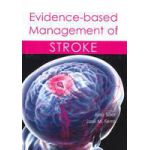


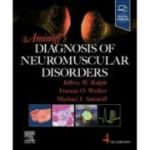
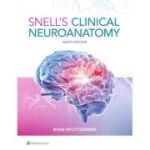
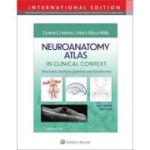
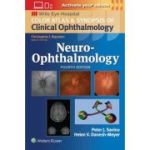
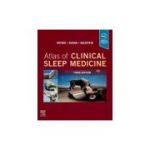




OUR VISITORS OPINIONS